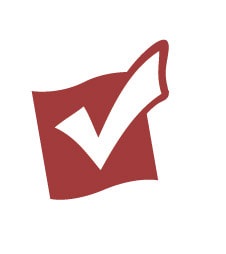
A referendum is a direct vote by the electorate on a proposal, law, or political issue. This is in contrast to an issue being voted on by a representative. This may result in the adoption of a new policy or specific law, or the referendum may be only advisory. In some countries, it is synonymous with and also known as plebiscite, votation,popular consultation, ballot question, ballot measure, or proposition.

Direct democracy or pure democracy is a form of democracy in which the electorate decides on policy initiatives without elected representatives as proxies. This differs from the majority of currently established democracies, which are representative democracies. The theory and practice of direct democracy and participation as its common characteristic was the core of work of many theorists, philosophers, politicians, and social critics, among whom the most important are Jean Jacques Rousseau, John Stuart Mill, and G.D.H. Cole.
A recall election is a procedure by which, in certain polities, voters can remove an elected official from office through a referendum before that official's term of office has ended. Recalls appear in the constitution in ancient Athenian democracy. Even where they are legally available, recall elections are only commonly held in a small number of countries including Peru, Ecuador, and Japan. They are considered by groups such as ACE Electoral Knowledge Network the most rarely used form of direct democracy.

A popular initiative is a form of direct democracy by which a petition meeting certain hurdles can force a legal procedure on a proposition. The hurdles the petition has to meet vary between countries, typically signatures by a certain number of registered voters.

In California, a ballot proposition is a referendum or an initiative measure that is submitted to the electorate for a direct decision or direct vote. If passed, it can alter one or more of the articles of the Constitution of California, one or more of the 29 California Codes, or another law in the California Statutes by clarifying current or adding statute(s) or removing current statute(s).
In the politics of the United States, the process of initiatives and referendums allow citizens of many U.S. states to place legislation on the ballot for a referendum or popular vote, either enacting new legislation, or voting down existing legislation. Citizens, or an organization, might start an initiative to gather a predetermined number of signatures to qualify the measure for the ballot. The measure is placed on the ballot for the referendum, or actual vote.

Prior to the Supreme Court's decision in Obergefell v. Hodges (2015), U.S. state constitutional amendments banning same-sex unions of several different types passed, banning legal recognition of same-sex unions in U.S. state constitutions, referred to by proponents as "defense of marriage amendments" or "marriage protection amendments." These state amendments are different from the proposed Federal Marriage Amendment, which would ban same-sex marriage in every U.S. state, and Section 2 of the Defense of Marriage Act, more commonly known as DOMA, which allowed the states not to recognize same-sex marriages from other states. The amendments define marriage as a union between one man and one woman and prevent civil unions or same-sex marriages from being legalized, though some of the amendments bar only the latter. The Obergefell decision in June 2015 invalidated these state constitutional amendments insofar as they prevented same-sex couples from marrying, even though the actual text of these amendments remain written into the state constitutions.
The Oregon Direct Legislation League was an organization of political activists founded by William S. U'Ren in the U.S. state of Oregon in 1898. U'Ren had been politically activated by reading the influential 1893 book Direct Legislation Through the Initiative and Referendum, and the group's founding followed in the wake of the 1896 founding of the National Direct Legislation League, which itself had its roots in the Direct Legislation League of New Jersey and its short-lived predecessor, the People's Power League.

Referendums are held only occasionally by the Government of New Zealand. Referendums may be government-initiated or held in accordance with the Electoral Act 1993 or the Citizens Initiated Referenda Act 1993. Nineteen referendums have been held so far ; fourteen were government-led, and five were indicative citizen initiatives.

Elections in California are held to fill various local, state and federal seats. In California, regular elections are held every even year ; however, some seats have terms of office that are longer than two years, so not every seat is on the ballot in every election. Special elections may be held to fill vacancies at other points in time. Recall elections can also be held. Additionally, statewide initiatives, legislative referrals and referendums may be on the ballot.

A ballot proposition in the state of Arizona refers to any legislation brought before the voters of the state for approval.

A popular referendum, depending on jurisdiction also known as a citizens' veto, people's veto, veto referendum, citizen referendum, abrogative referendum, rejective referendum, suspensive referendum, and statute referendum, is a type of a referendum that provides a means by which a petition signed by a certain minimum number of registered voters can force a public vote (plebiscite) on an existing statute, constitutional amendment, charter amendment, or ordinance; in its minimal form, it simply obliges the executive or legislative bodies to consider the subject by submitting it to the order of the day. It is a form of direct democracy.

Elections in Oregon are all held using a Vote by Mail (VBM) system. This means that all registered voters receive their ballots via postal delivery and can vote from their homes. A state Voters’ Pamphlet is mailed to every household in Oregon about three weeks before each statewide election. It includes information about each measure and candidate in the upcoming election.
A legislative referral is a referendum in which a legislature puts proposed legislation up for popular vote. This may either be voluntarily or, as is the case in many countries for a constitutional amendment, as a mandatory part of the procedure for passing a law. These referrals, depending on the location, can either amend a constitution or enact a change in statute. It is a form of direct democracy. In some places it is known as an authorities referendum,authorities plebiscite, government initiated referendum, or top-down referendum It may originate from the legislative branch, executive branch, or a combination of the two.

Proposition 7 of 1911 was an amendment of the Constitution of California that introduced, for the first time, the initiative and the optional referendum. Prior to 1911 the only form of direct democracy in California was the compulsory referendum.
The U.S. state of Oregon is one of the many states in the United States that has direct democracy in the form of initiatives and referendums. Oregon residents introduced this system in 1902 with a ballot measure. Nationwide, referendums and initiatives became known as the "Oregon System" of direct government.

The Citizens in Charge Foundation (CCF) is a nonprofit, non-partisan organization that advocates in favor of direct democracy. It was founded by libertarian activist Paul Jacob who has served as its president since its founding in 2001.
Massachusetts has several forms of direct democracy, allowing for initiative and referendums at the state level and in many municipalities. The recall of public officials is also provided for in many municipalities.

2020 Florida Amendment 4, commonly known as the Think Twice Initiative was a proposed amendment to the Constitution of Florida that failed by 52.47% to 47.53% in the 2020 election on November 3, 2020. The amendment would have required new constitutional amendments to be approved by voters twice in order to go into effect.
The following is a list of ballot measures, whether initiated by legislators or citizens, which have been certified to appear on various states' ballots during the 2024 United States elections as of 17 December 2023.












